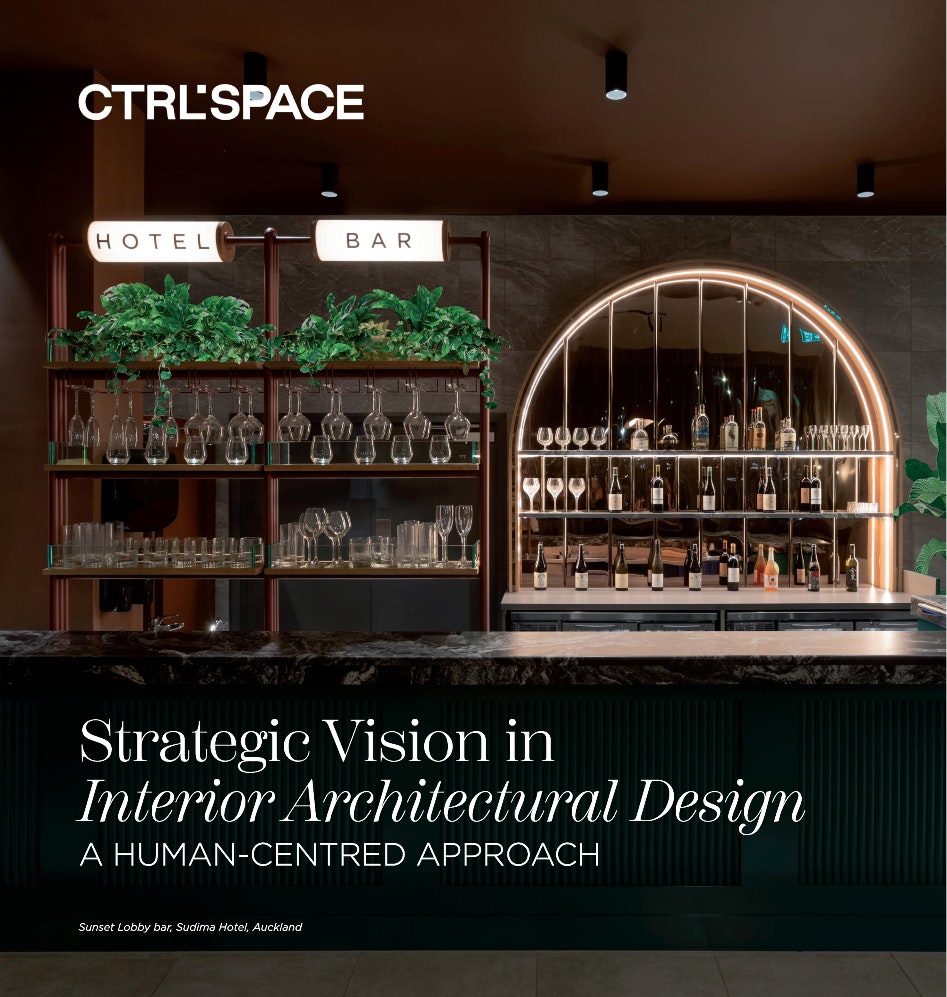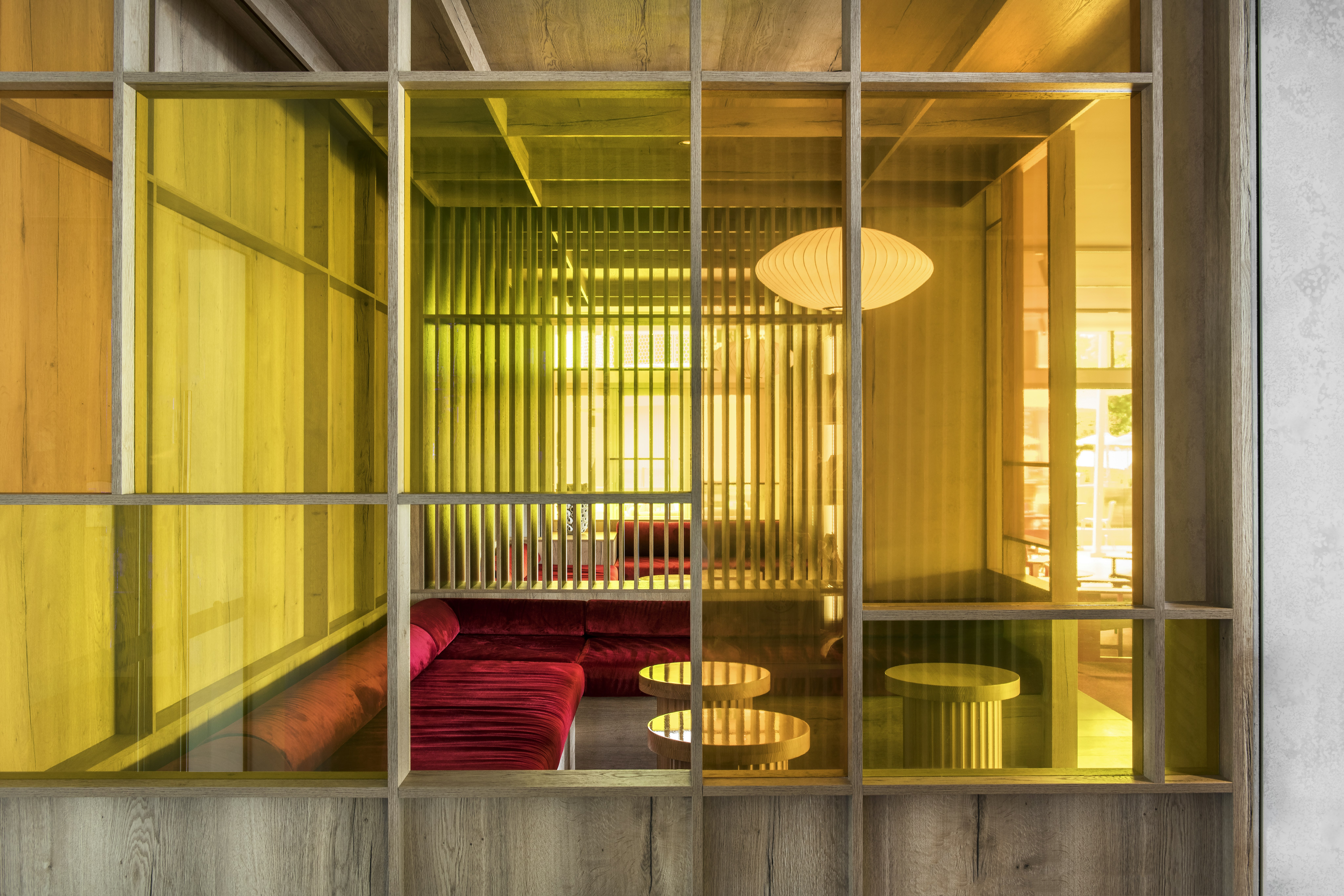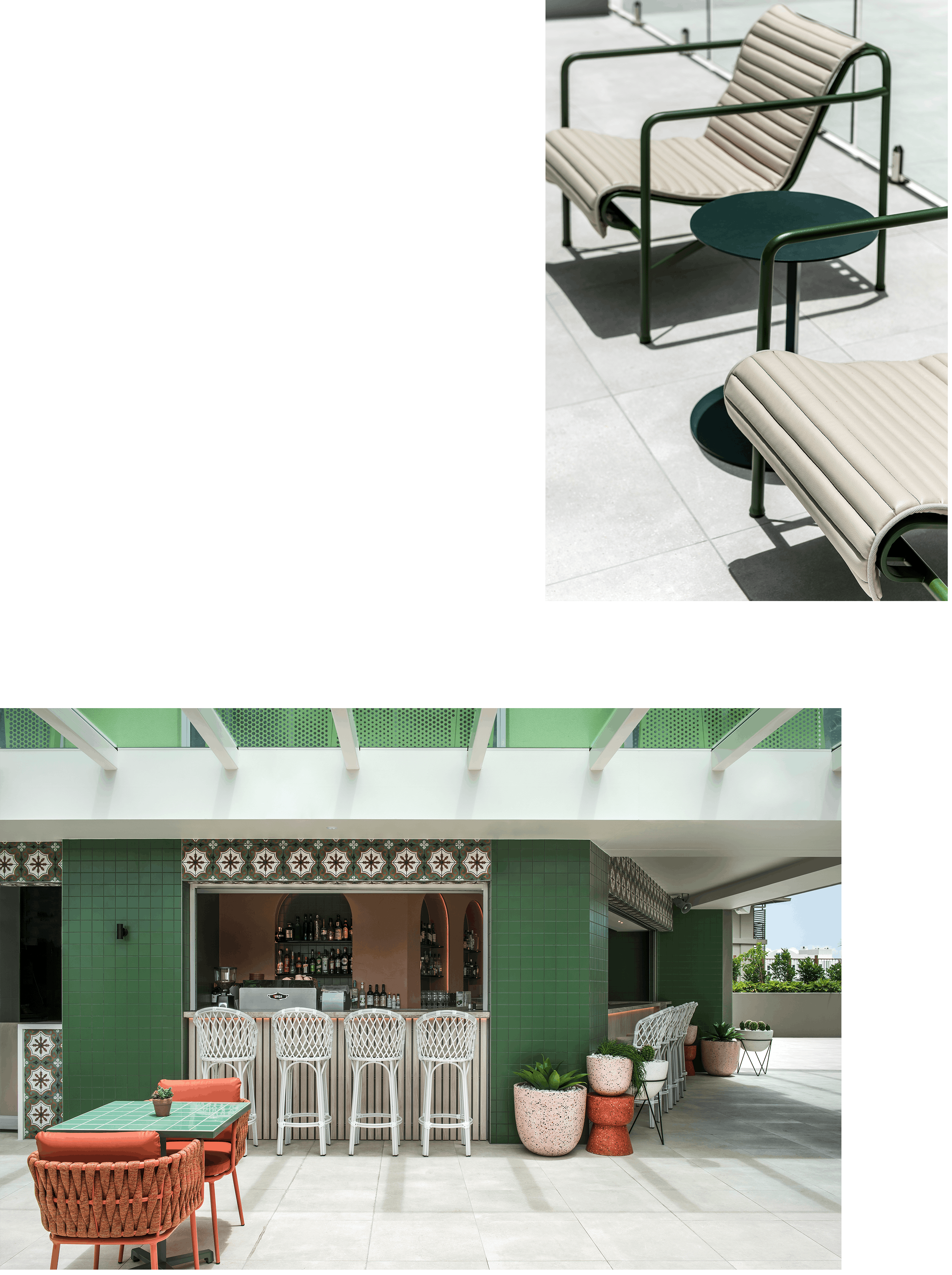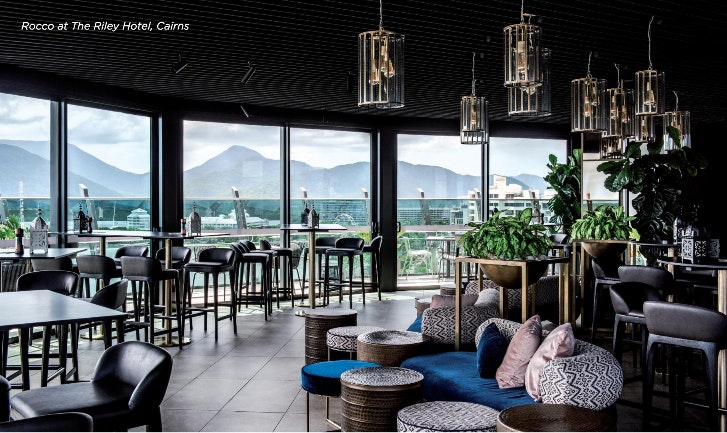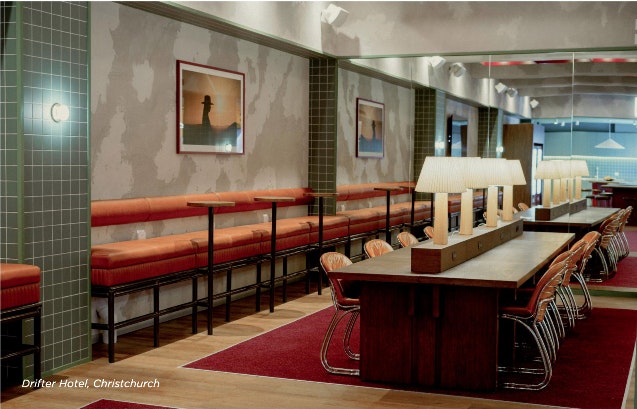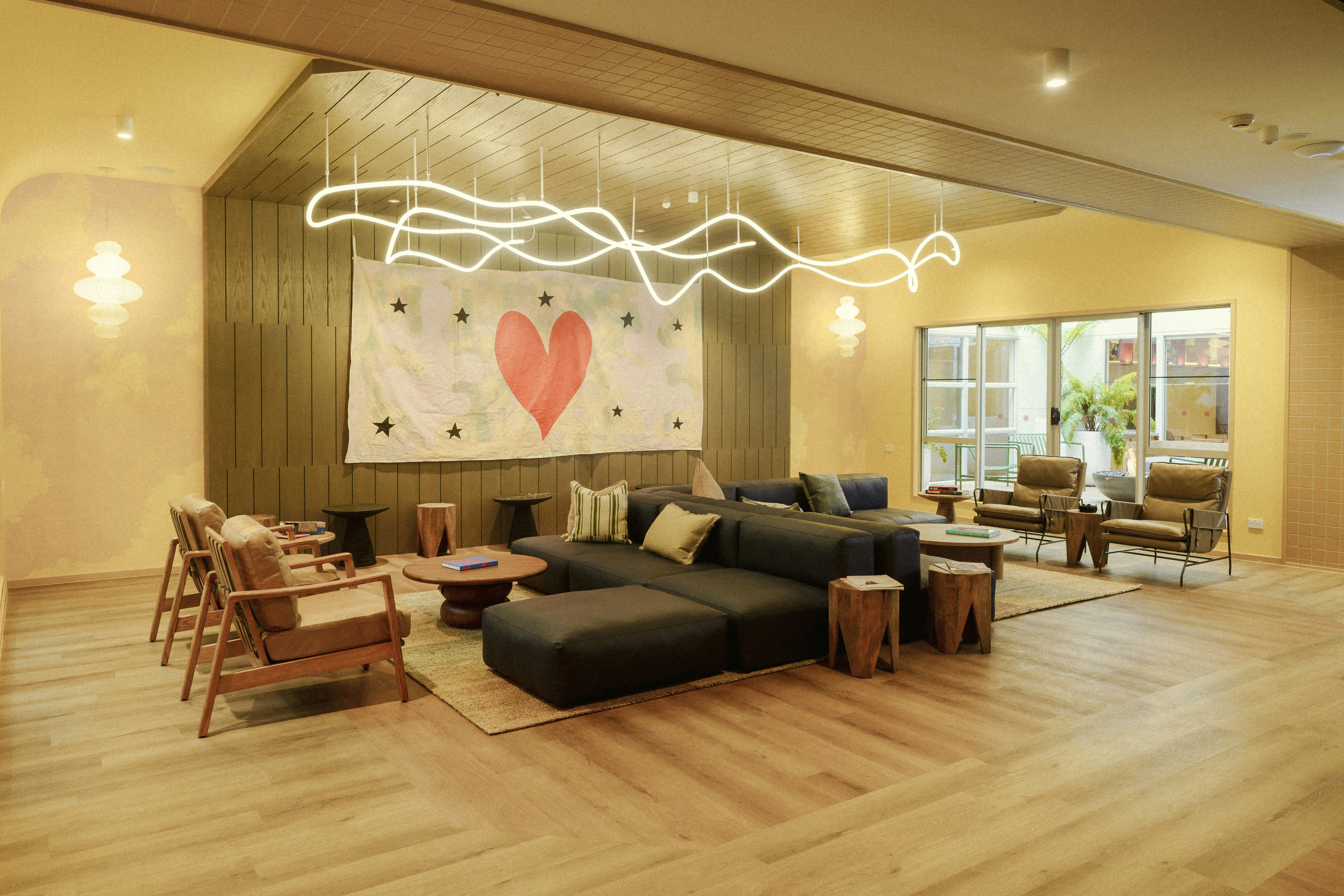BEYOND PRECINCTS: WHY STRATEGIC PLANNING MATTERS EVERYWHERE
When we think of large-scale, future-focused design, we often consider precincts like Britomart in Auckland, Queens Wharf in Brisbane, or Barangaroo in Sydney. These developments take an integrated approach, considering how all elements interact to create a cohesive experience. So why don't we apply the same strategic thinking to standalone projects, like hotels and hospitality spaces? Too often, these projects are designed without considering the broader context, missing opportunities for greater cohesion, efficiency, and long-term success.
A STRATEGIC FRAMEWORK VS. A FRAGMENTED APPROACH
Many projects adopt a fragmented approach, designing each space independently. A more effective strategy involves stepping back to assess the bigger picture, ensuring that all elements work together seamlessly. This approach not only creates a cohesive guest experience but also streamlines operations and future-proofs spaces.
Take the hybrid-hotel concept of Drifter, for example, CTRL Space designed Drifter Christchurch, and is currently working on Drifter Melbourne and Drifter Wellington, with Auckland following closely behind. While each hotel is unique, our strong, human-centric design philosophy ties them together. Each Drifter location integrates with its surrounding community, with design decisions driven by how guests will interact with the space. By focusing on the demographic profile of the projected guest and the localised cultural context, we unlock design nuances that reflect the city's character, creating tailored experiences rather than generic ones.
THE POWER OF COLLABORATION AND UNIFIED VISION
For this strategic approach to succeed, all stakeholders-owners, designers, and contractors-must align with a shared vision. The designer's role is to synthesise these perspectives into a comprehensive strategy that prioritises the user experience.
Collaboration between architects and interior designers-whether within a single agency or across multiple teams-is crucial. A well- coordinated team, each bringing their expertise to the table, leads to innovative solutions and a stronger final product. At CTRL Space, we can bring both architectural and interior design services under one roof, ensuring a unified approach from start to finish.
For example, when working on two hotels simultaneously in Cairns-The Bailey & The Riley-we considered the inter-relationship between multiple outlets in close proximity. Ranging from a casual Asian dining space to a premium rooftop restaurant experience, the project was a collaboration between ourselves, the client, and an F&B consultant to ensure the concept mix was both highly curated and relevant.
In the end, there were six venues in total: The Bailey had a coffee & gelato outlet, a premium Australian steak restaurant, and a fun-filled Mexican rooftop restaurant. The Riley offered a casual poolside alfresco space, a contemporary Asian fusion restaurant, and a Middle Eastern-inspired cocktail lounge with 270-degree views of Cairns. The broad mix of venues provided the hotel and its guests with a comprehensive hospitality experience.
THE RIGHT TIME TO INVOLVE A DESIGNER
Engaging a designer from the feasibility stage streamlines the entire process, ensuring alignment across all stakeholders from the outset. This early collaboration helps establish a clear framework, preventing costly missteps and ensuring that design decisions support both functionality and commercial viability.
HUMAN-CENTERED DESIGN FOR LASTING IMPACT
A well-planned space isn't just functional; it connects emotionally with users. Whether designing a hotel lobby, a restaurant, or an entire development, every element should contribute to a seamless, intuitive experience. At CTRL Space, our human-centric approach ensures that every design decision is grounded in practicality without sacrificing creativity. Our goal is to create spaces that not only look exceptional but work effortlessly for those who use them.
BALANCING FLEXIBILITY WITH VISION
A successful strategic framework doesn't aim to solve every problem upfront but provides a structure that allows for adaptability. Spaces must evolve alongside changing guest expectations and industry trends. The key lies in balancing a strong vision with flexibility, ensuring spaces remain relevant without compromising the core concept.
PURPOSEFUL DESIGN = LONG-TERM SUCCESS
Thoughtful planning impacts every operational aspect of a hospitality space-from staffing efficiency to guest comfort. A well-considered layout enhances profitability and user experience, while poor planning leads to inefficiency and a disjointed atmosphere.
Ultimately, strategic vision isn't just about aesthetics-it's about designing spaces that are functional, adaptable, and deeply connected to the people who use them.
By applying the same thoughtful approach to standalone projects as we do to large-scale developments, we create hospitality spaces that thrive both now and into the future.
CONCLUSION
Strategic master planning is not just a tool, it's the blueprint for creating spaces that are not only functional and beautiful but also adaptable and future- proof. It requires a clear vision, careful planning, and a balance between practicality and flexibility. By involving all stakeholders early, maintaining a focus on the user experience, and embracing adaptability, designers can create spaces that deliver lasting value for both operators and guests.
In a rapidly evolving hospitality industry, the projects that succeed are those that anticipate change and remain flexible enough to accommodate it.
Start with the end in mind, plan with confidence, and always be ready to adapt.
